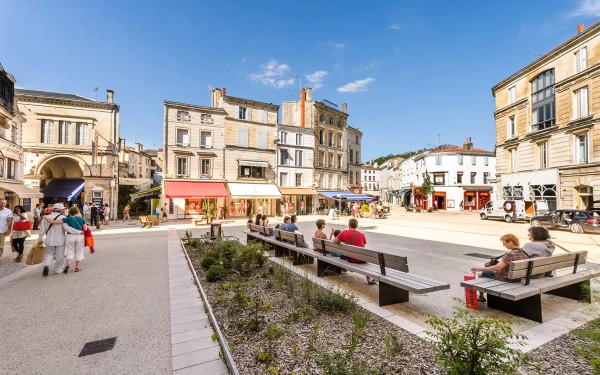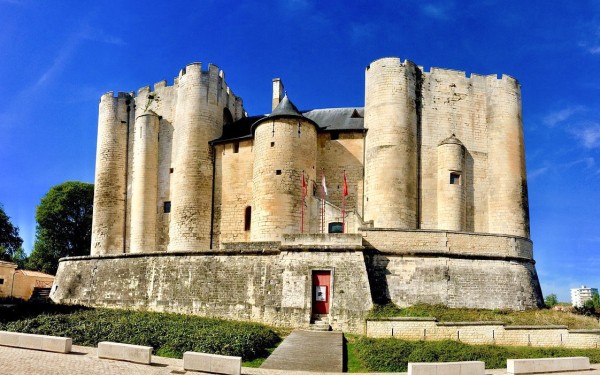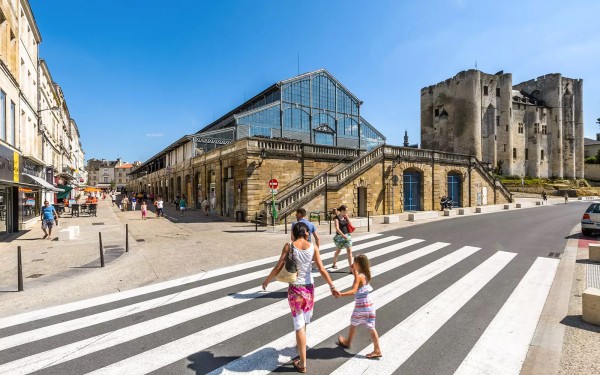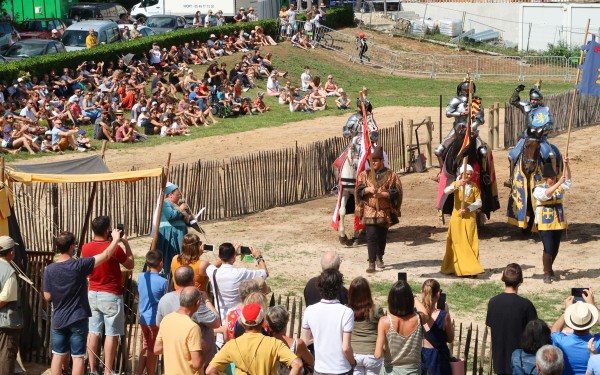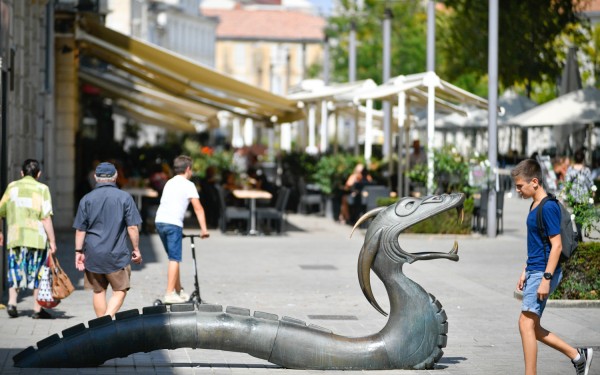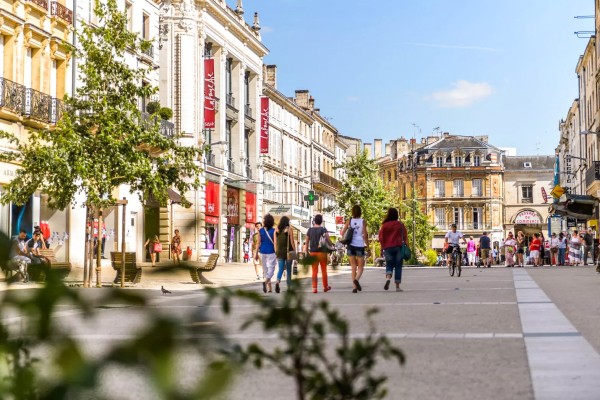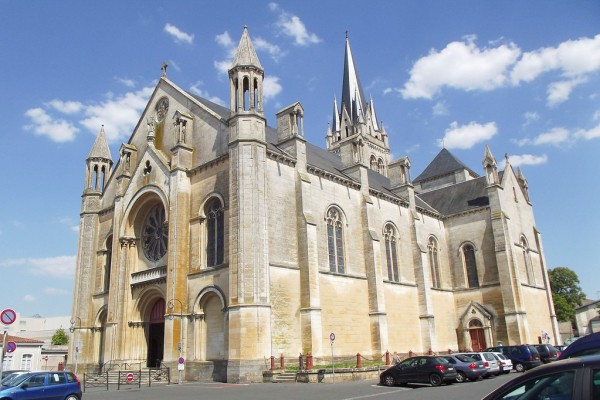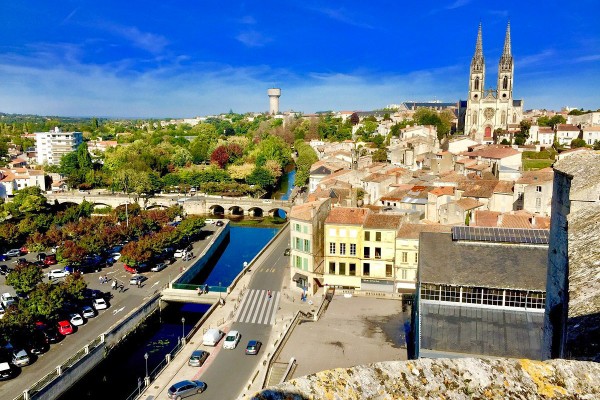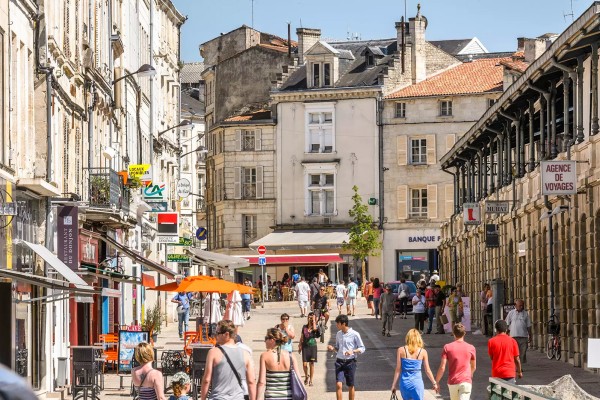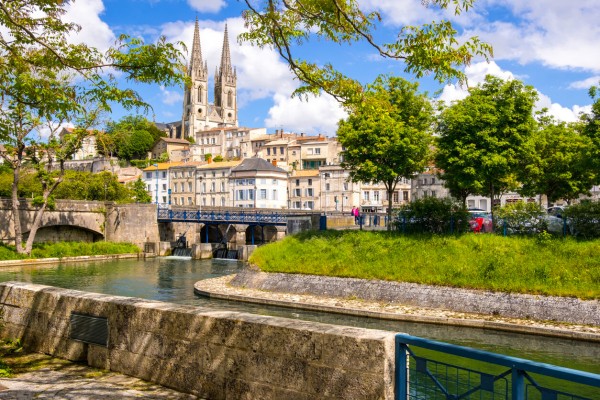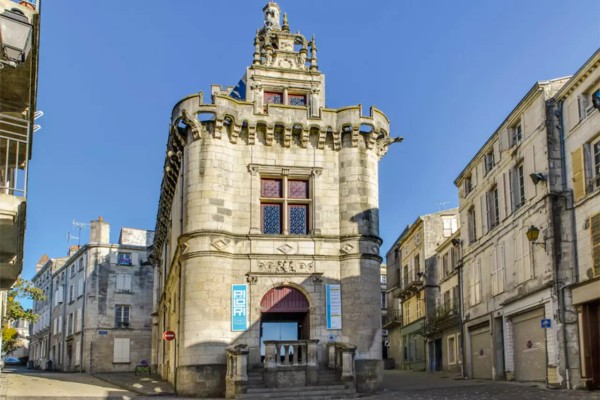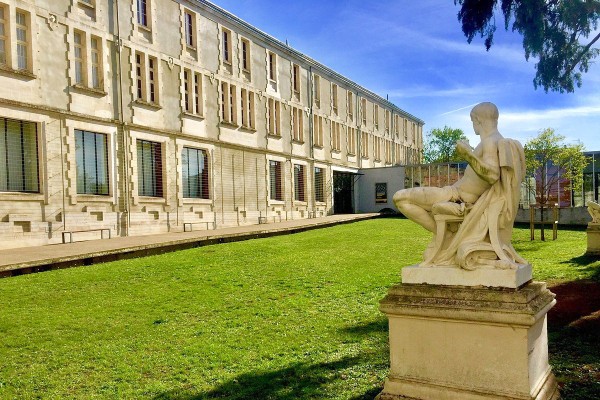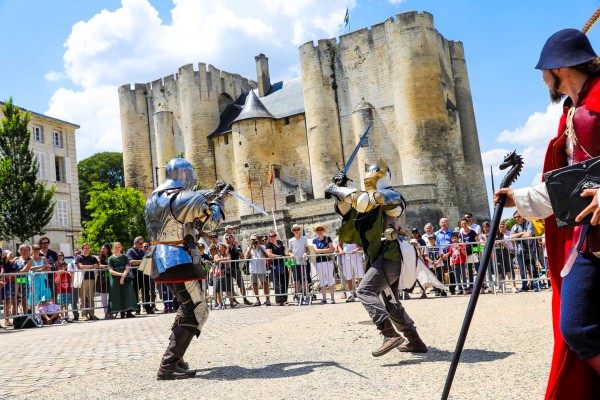Niort is also known as the Green Venice. Niort is the gateway to the Marais Poitevin, a huge nature reserve which stretches from Niort to the Atlantic coast. After the Camargue near Marseille on the Mediterranean Sea, Marais Poitevin is the largest wetland nature reserve in France with tens of thousands of tourists every year. During your holidays in Poitou - Charentes there is time to visit this area.
The city itself is located on the banks of the river Sèvre Niortaise and is known for its unique and iconic Donjon, the beautiful market halls, the old houses, stunning churches and the 16th century former town hall called the "Pilori", also called the pillory. There are four bronze dragons in the main shopping street. There is a legend from the 12th century which tells the origins of the dragons. Who defeated the dragon? Niort is most definitely worth a visit from your holiday home in Poitou-Charentes in France. Take a stroll through the beautiful shopping streets and past the cozy terraces.
Historic city centre of Niort
A large part of the city centre is car-free seen as the countless narrow medieval streets have tool little space for cars. This ensures that you can walk around safely through the city. Walk past the half-timbered houses from the 15th and 16th centuries on Rue Saint-Jean and Rue du Petit-Saint-Jean or pas the hotels with beautiful facades, such as the Maison de la Vierge and the Pilori. There are plenty of bars and cafes with terraces in the old town where you can rest and have a drink. If you are visiting the city, you may need a France environment sticker “Crit’Air”. There is a possibility that you will drive through a permanent or temporary environmental zone.



